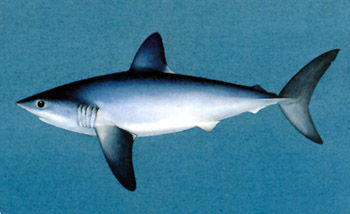
One vulnerable shark species, the Porbeagle shark, was protected today at the Convention on International Trade in Endangered Species meeting in Doha, Qatar, but protection for three others was rejected.
The Porbeagle shark, a cousin of the great white shark, is targeted by fishermen because its large fin is worth a great deal in Asian markets for shark’s fin soup. It was added to CITES Appendix II, requiring exporting countries to make sure that international trade is legal and won’t harm the survival of the species.
“Sharks have been on our planet for more than 400 million years,” said Matt Rand, director of global shark conservation for the Pew Environment Group. “But if governments do not act, many shark species will not last – even iconic species like the hammerheads. Most species reproduce late in life, have few young and simply do not have the capacity to recover from commercial overfishing and global trade.”
However, three other species were rejected:
– Scalloped hammerhead sharks. By some counts, these sharks, with their distinctive heads, have declined by as much as 98% in some regions. Two other look-alike species, the great and smooth hammerheads, were included because they’re also vulnerable to overfishing because of the similarity of their fins
– Oceanic whitetip sharks. These sharks have been fished down to 10% of their historical populations in the central Pacific Ocean and to only 1% in the Gulf of Mexico, because their Mostly large fins can cost up to $40 per pound.
– Spiny dogfish sharks. These sharks have the longest pregnancy of any animal with a backbone, up to two years, so they reproduce very slowly, and consequently take a very long time to recover from overfishing.
Up to 73 million sharks a year are not killed not for their meat but for their fins, which are prized to make shark fin soup in China. Often the fin is sliced off the living shark and then the body is thrown back into the ocean to die. In Europe, shark meat, especially from spiny dogfish and porbeagle sharks, is also highly prized.
“The shark fin trade which is responsible for the killing of up to 73 million sharks each year remains largely unregulated,” said Rand.
Conservationists lamented that short-term economic gain seemed to be trumping the possible survival of species. “It appears that science no longer matters. CITES is not fulfilling its obligation to protect species threatened by international trade. When will we realize that short-term profits will not last?” said Elizabeth Griffin, the marine scientist and fisheries campaign manager for Oceana, a large marine conservation group.